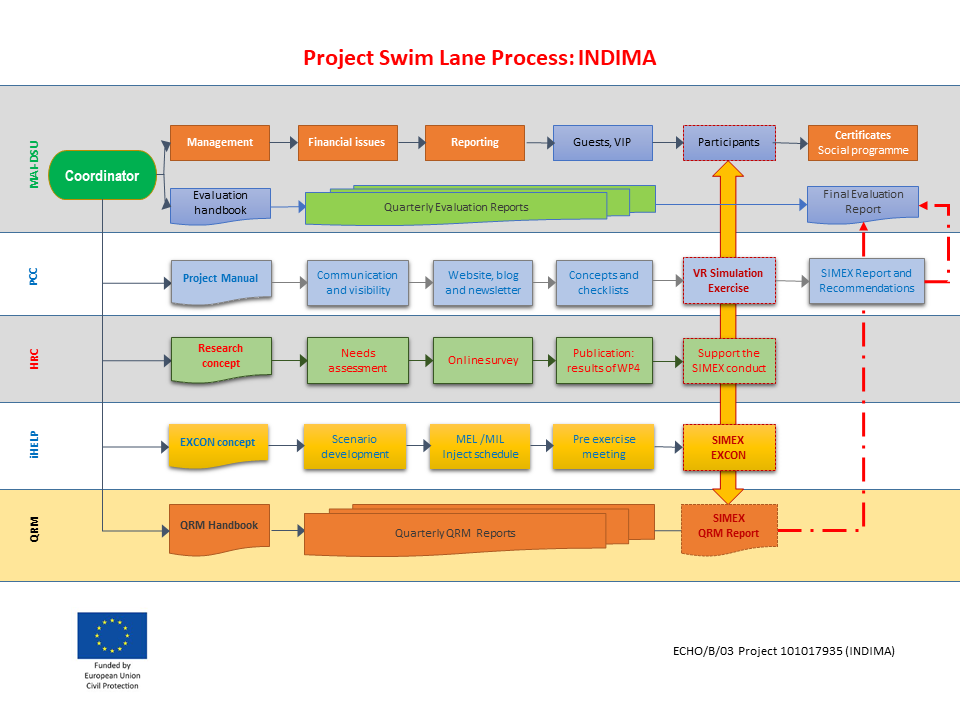Six months of the INDIMA project (funded by the European Union) have passed, the first phase “needs assessment” and the “stakeholder analysis” have been successfully completed. With the workshop’s “coordination”, legal aspects, and interoperability, the relations between disaster risk management authorities and other stakeholders are examined. European experts from disaster and crisis management are invited to contribute their valuable experience and expertise.
This is where the strength of the applied “swim lane concept” becomes apparent. A “swim lane” is a diagram for the visual representation of sub-processes of a project. The work packages are partly processed simultaneously and by mainly one responsible partner. The project management and evaluation are carried out by DSU Romania, the Romanian Department for Emergency Measures and supported by iHELP institute, a Polish NPO. The work package research is with the Hungarian Red Cross, Department of Disaster Management. The development of the network concept and the communication work package is led by publiComm GmbH. publiComm, with its consulting division, is a specialist in the development of algorithms, processes, checklists, manuals and SOPs (standard operating procedures).
Clear responsibilities, the avoidance of duplication, defined sub-processes and simple reporting are the advantages. If the work packages are carried out by those project partners who have experience and competence in this field, the deliverables should also be available on time as planned in the project manual.
This has been achieved so far in the INDIMA project, an indicator that the right partners have been entrusted with the right task.
In the second phase of the project, the process and checklists for the Integrated Management of Crises and Disasters will be developed and then tested and finalised in a simulation exercise in the third phase.
As in many projects, the design of the project, the work packages and the definition of the deliverables are a major influencing factor for the quality and the adherence to the schedule. For this purpose, the ongoing evaluation and QRM (quality and risk management) of the project management must identify deviations and risks in order to be able to take quick corrective measures.
It can be stated that the current project is on schedule, i.e. the traffic light code is “green” in all three areas (project objective, schedule and finances).

